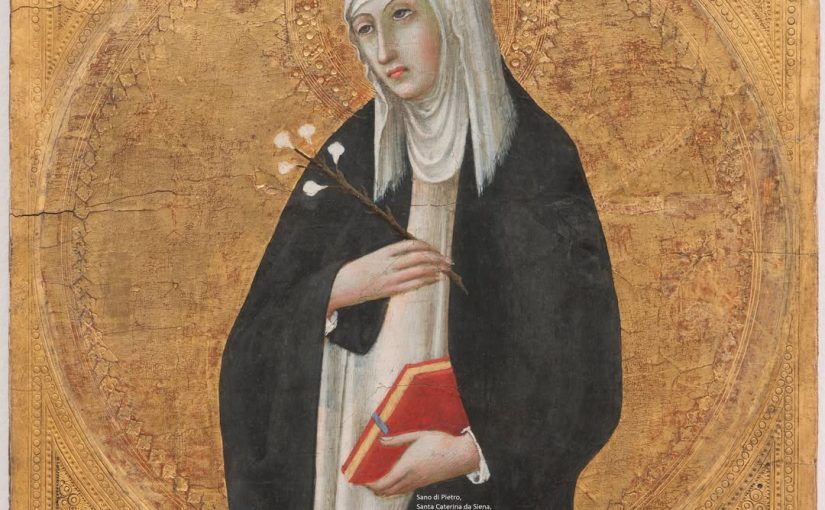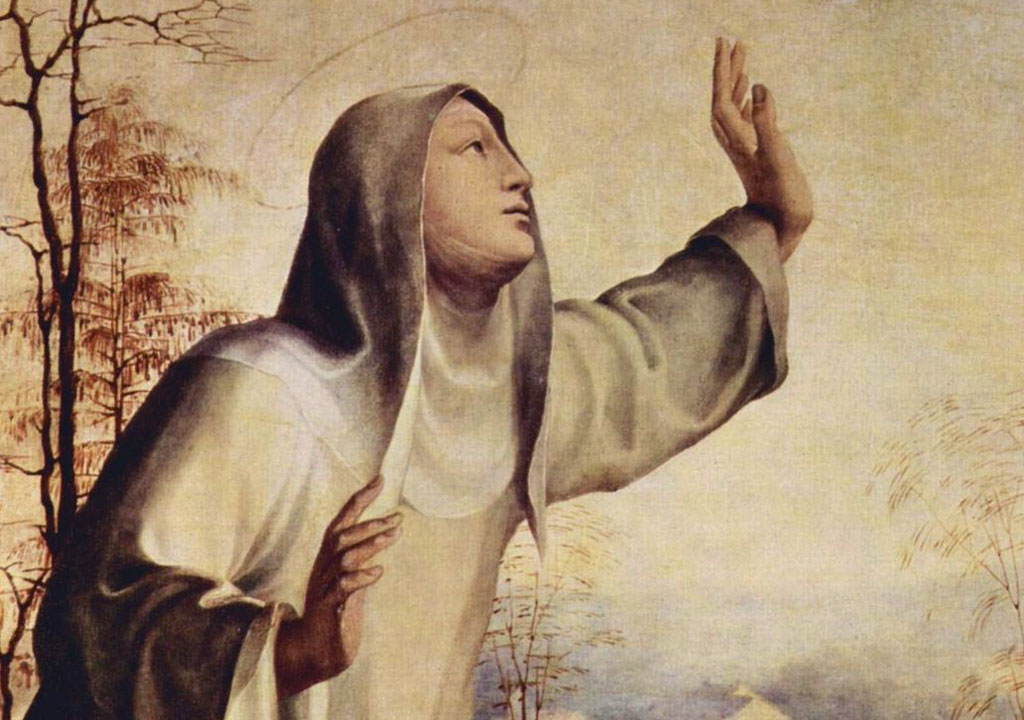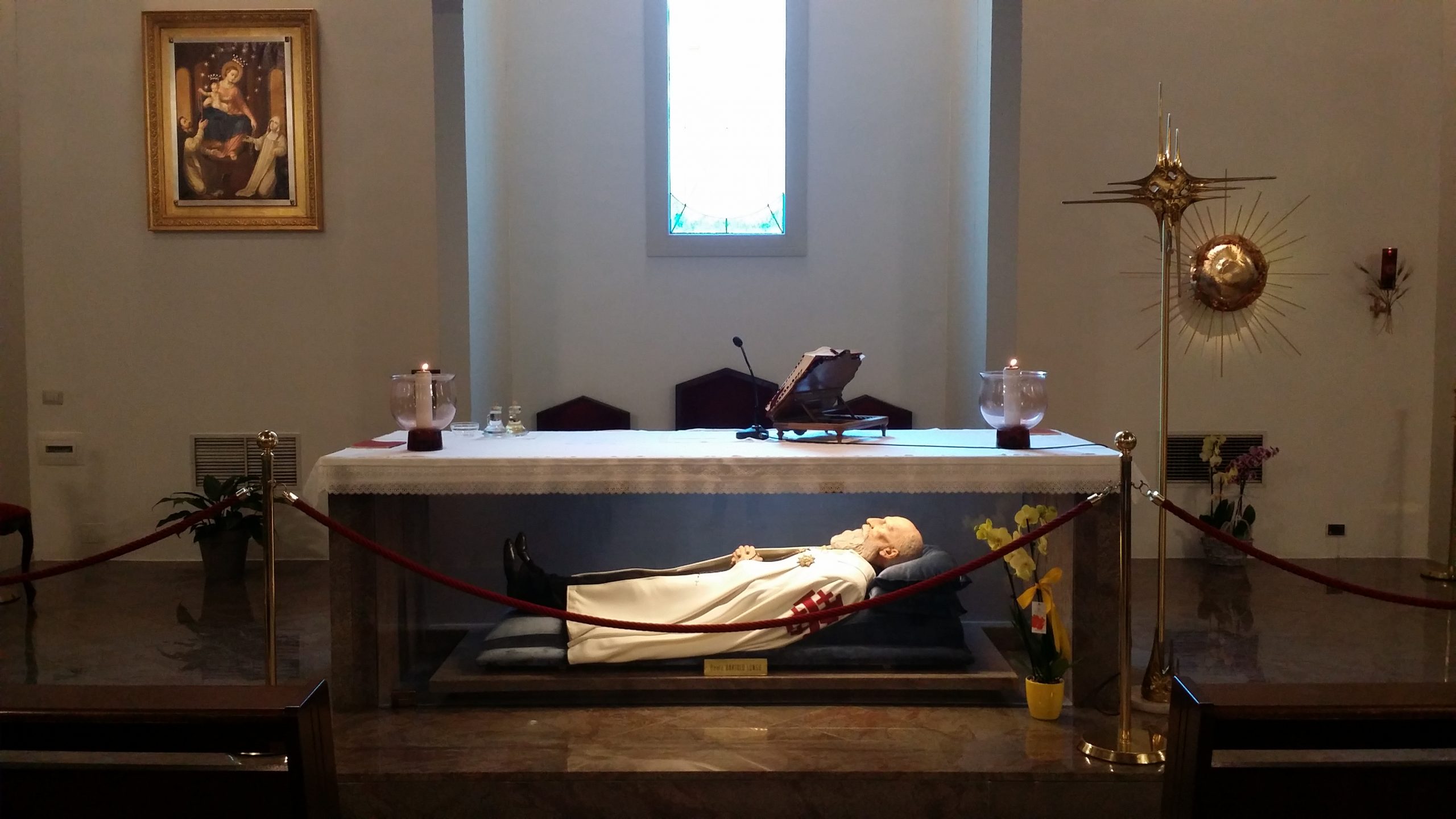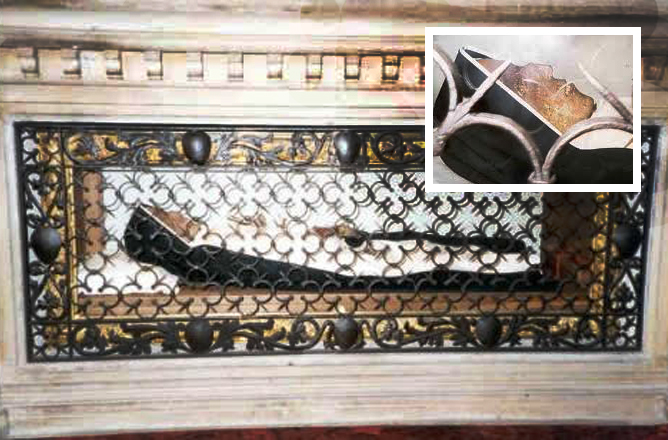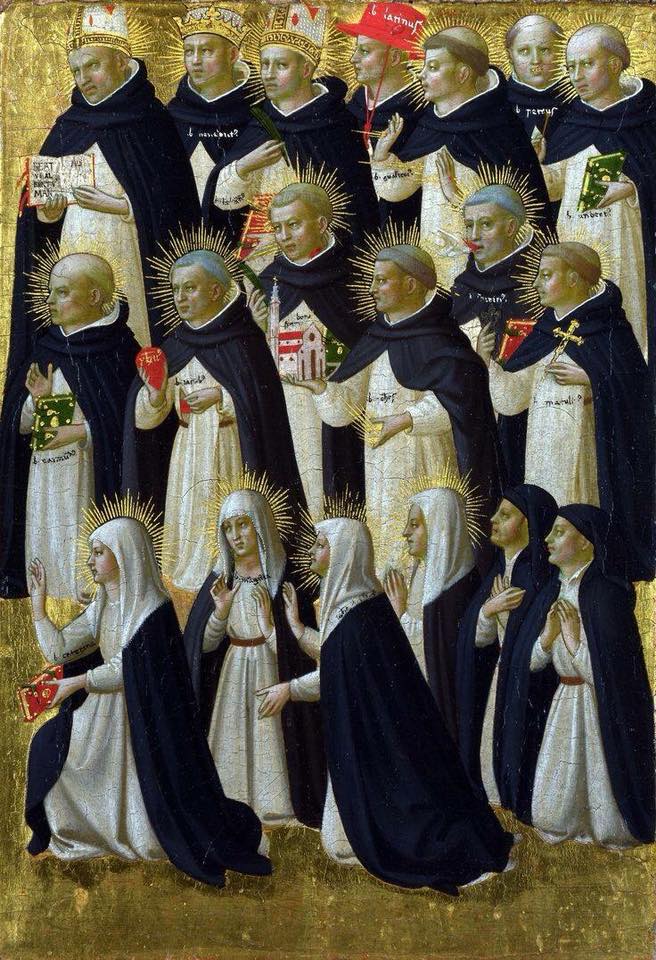Category: Dominican saints & blesseds
HOLY DESIRE
“The reason we cannot have this sort of peace in this life is that our desire is not completely satisfied until we reach this union with the divine Being. As long as we are pilgrim travelers in this life we have only desire and hunger: desire to follow the right path, and hunger to reach our final destination. This desire makes us run along the way, the road cemented by Christ crucified. For if we had no longing for God as our destination, we would have no concern for wanting to know the way. I want you, then, to have an ever greater true holy desire to follow this way, the road that will bring you to your destination. . .
Take your lesson from Christ, who in his restlessly yearning hunger and thirst for our salvation cried out from the wood of the most holy cross, ‘I thirst!’ It is as if he were saying: ‘I am more longingly thirsty for your salvation than I can show you through this finite suffering.’ Yes, he is tortured with physical thirst, but that suffering is finite. It is the pain of holy desire, shown us in his thirst for the human race, that is infinite.”
(St. Catherine of Siena)
Blessed Bartolo Longo
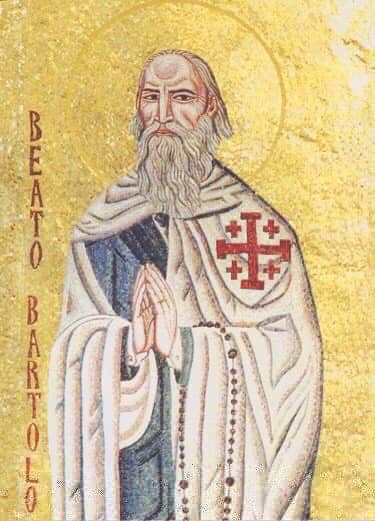
Today, 5 October, is the liturgical memorial of a former satanist priest revert Catholic and promoter of the Rosary. Today our reflection and call to deeper faith has us meditating on the life and work of Blessed Bartolo Longo (1841-1926), who according to Pope John Paul II, the “Apostle of the Rosary.” The witness of Longo is one that is personal in two ways: my baptismal parish is Our Lady of Pompeii where the Rosary has been prayed fervently for years, and in mid-October I’ll be invested in the Order of the Holy Sepulchre, a group to which Blessed Bartolo also belonged. The parish the image and relic of Blessed Bartolo hangs in quite guidance of those who pass by. While I have a strong connection with the Order of Preachers, Longo was a professed member of the Third Order Laity, now known as the Fraternity of St Dominic. The Lay Dominican vocation gave certain direction to Longo which formed his heart and mind anew dedicating himself to Truth, Beauty and Goodness.
A brief biography of Blessed Bartolo Longo can be read here.
This prayer are caught under the bondage of Satanism and the occult:
“O Blessed Rosary of Mary, sweet chain that unites us to God, bond of love that unites us to the angels, tower of salvation against the assaults of Hell, safe port in our universal shipwreck, we will never abandon you. You will be our comfort in the hour of death: yours our final kiss as life ebbs away. And the last word from our lips will be your sweet name, O Queen of the Rosary of Pompei, O dearest Mother, O Refuge of Sinners, O Sovereign Consoler of the Afflicted. May you be everywhere blessed, today and always, on earth and in heaven.”
Good news on Blessed Margaret of Città di Castello
Today, 24 April 2021, Pope Francis received in audience Cardinal Marcello Semeraro, Prefect of the Congregation for the Causes of Saints.
The Vatican News states: “During the audience, the Supreme Pontiff confirmed the conclusions of the Ordinary Session of Cardinals and Bishops, Members of the Congregation, and decided to extend the cult of Blessed Margaret of Città di Castello, of the Third Order of Friars Preachers Friars, to the universal Church; born around 1287 in Metola (Italy) and died in Città di Castello (Italy) on 13 April 1320, inscribing her in the catalog of the Saints (Equivalent Canonization).”
As one wrote, this is excellent news not only for the Order of Preachers, but also for the ProLife Movement. St. Margaret was born blind, deformed in face, a hunchback, with one leg shorter than the other, a dwarf (her incorrupt body is amazingly small), finally abandoned by her parents in her teenage years, She died at 33 a saintly woman beloved by so many … she is a reminder of the value of all lives and the power of faith and hope in the face of immeasurable suffering and abandonment.
St Margaret, pray for us.
St Martin de Porres
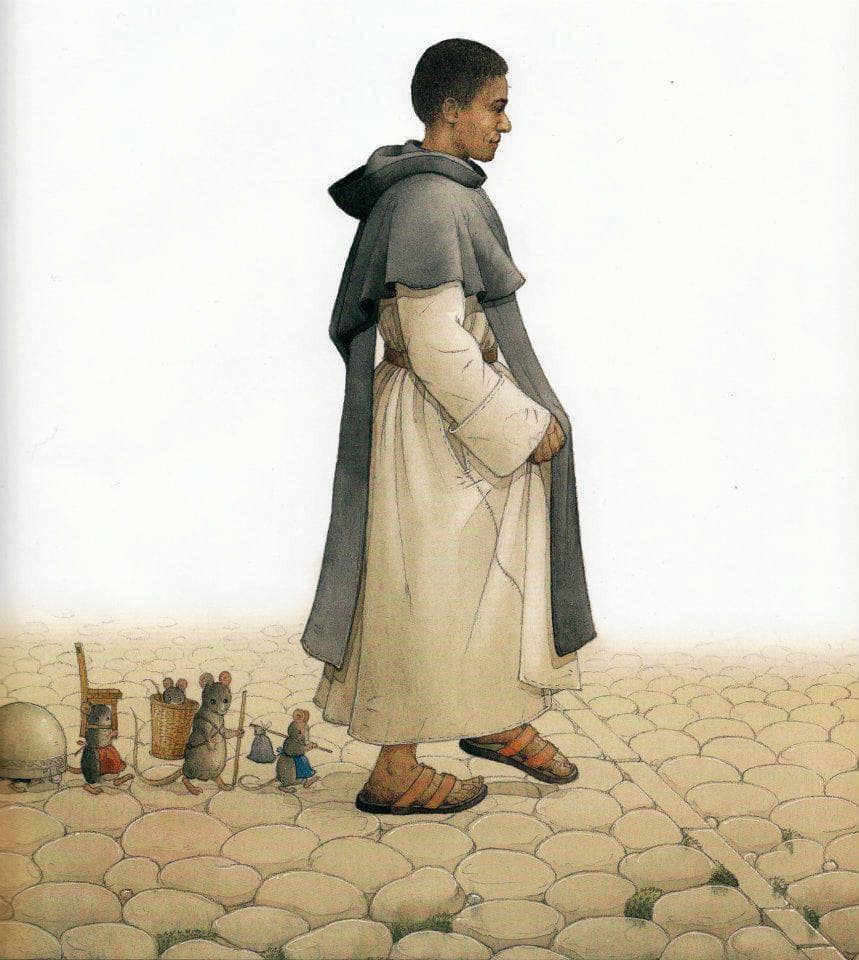 O God, who exalts the humble and who made Saint Martin your confessor, to enter into the heavenly kingdom, grant through his merits and intercession, that we may so follow the example of his humility on earth as to deserve to be exalted with him in heaven. Through Our Lord Jesus Christ. Amen.
O God, who exalts the humble and who made Saint Martin your confessor, to enter into the heavenly kingdom, grant through his merits and intercession, that we may so follow the example of his humility on earth as to deserve to be exalted with him in heaven. Through Our Lord Jesus Christ. Amen.
Saint Martin de Porres, draw us closer to Christ, pray for us.
St Mary Magdelene
 The Church, East and West, liturgically honor St Mary Magdalene. She often bears the titles of “The holy myrrhbearer”, “equal of the apostles” and as scripture shows, she was “apostle to the apostles.” These titles give a deeper perspective on this woman called by Jesus.
The Church, East and West, liturgically honor St Mary Magdalene. She often bears the titles of “The holy myrrhbearer”, “equal of the apostles” and as scripture shows, she was “apostle to the apostles.” These titles give a deeper perspective on this woman called by Jesus.
The Byzantine Liturgy sings this kondakion for the feast:
Today, let us sing a special hymn in honor of that friend of the Lord who was the first to anoint him in death. Let us praise Mary Magdalen for being the messenger of joy for his disciples, and let us fall before the Lord himself, filled with wonder, that he should lavish on the world such a fountain of grace.
Scripture reveals Mary’s life as a devoted follower of Christ whose loyalty remained firm when even the faith of the other twelve apostles wavered.
As the monks of New Skete say in their hagiography of Mary, “The Church gives Mary Magdalene special honor as the most faithful companion of Jesus as she was at the foot of the cross when he was crucified, and was the first to witness his resurrection. Her encounter with Christ on her way to perform the funeral anointing, as recorded by John, earned her an apostles’ task, for it was she who was commissioned to tell the other apostles that Christ had risen.”
Keeping a perspective on today’s feast, it was Pope Francis who raised the level of liturgical remembrance from a memorial to a feast. The Pope, aligning himself with established tradition, names Mary Magdalene “Apostolorum Apostola” (Apostle of the Apostles). Keeping in line with his year of Mercy Francis gives Mary as a witness of mercy. It was said that St Mary Magdalene’s feast day is a call for all Christians to “reflect more deeply on the dignity of women.” In the Western liturgical tradition of the Church, most liturgical celebrations of particular saints are formally identified as memorials and those classified as feasts are reserved for key events in Christian history; saints of particular closeness to the Lord, the liturgical days like the Twelve Apostles are known as feasts. Hence, as equal to the Apostles is honored with a feast day not merely as a memorial.
Of the religious orders in the Western Church, the Order of Friars Preachers, has St Mary Magdalene as one of the patronesses of the Order (the other is St Catherine of Alexandria). It was Blessed Humbert of Romans, second Master of the Order after St. Dominic who wrote, “After Magdalene was converted to penitence the Lord bestowed such great grace upon her that after the Blessed Virgin no woman could be found to whom greater reverence should be shown in this world and greater glory in heaven.”
Why make much of St Mary Magdalene? For several reasons. In light of the Dominicans, the Order of Preachers, where we find several expressions of the Dominican vocation which complement the friar-priests, that is, there are brothers, nuns, sisters and laity –I think today she shows us that to be a preacher of the Good News of Jesus Christ a woman (or a layman) need not be a priest. The ministerial priesthood is now being questioned or revised herein. We have in our ecclesiology the priesthood of baptized, or it is called the global priesthood. The second reason I will give: do not underestimate the power and necessity of the witness one gives with the manner of life, our words AND our actions. Third, it is important to recall with intensity who was the first to proclaim the Good News of the Resurrection. God in His wisdom gave us Mary to draw our attention to the miracle of the conquering of death by death itself. Finally, Mary Magdalen is important because the Church esteems her as a model of how repentance opens us up to the grace of Jesus’ mercy and her ability to lead others to Christ. In short: there is always a need for God’s forgiveness known in the Sacrament of Confession.
St Pius V
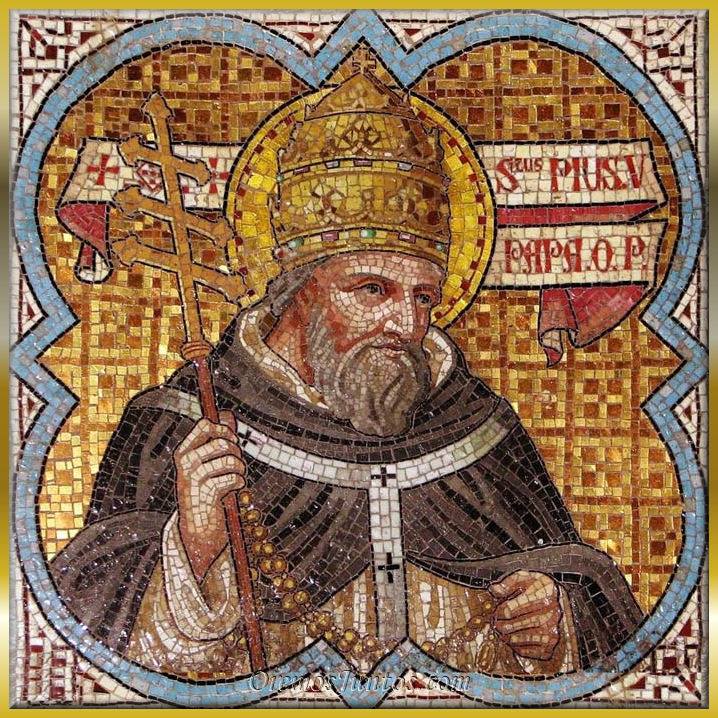 Today, we have the liturgical memorial of Pius V, pope and friar in the Order of Preachers.
Today, we have the liturgical memorial of Pius V, pope and friar in the Order of Preachers.
Elected to the Chair of Saint Peter he renewed with great mercy and apostolic vigor, according to the decrees of the Council of Trent, the divine worship of the Latin Church plus gave new life to Christian morality and the ecclesiastical discipline and promoted the propagation of faith.
May St. Pius V intercede for us today and always.
St Thomas Aquinas
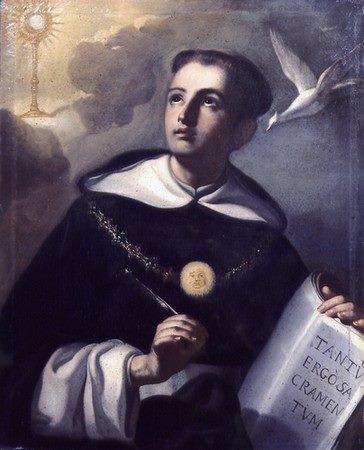 Today, 28 January, on the Novus Ordo calendar, is the liturgical memorial of Saint Thomas of Aquino, priest of the Order of Preachers and Doctor of the Church. The young Thomas was educated as a Benedictine Oblate by the monks at the venerable abbey at Monte Cassino. Despite his family’s opposition, he joined the newly founded Dominicans and studied under St Albert the Great. He is known to have been gifted by God with significant gifts of intellect. Aquinas was known as the Doctor Communis and the Doctor Angelicus.
Today, 28 January, on the Novus Ordo calendar, is the liturgical memorial of Saint Thomas of Aquino, priest of the Order of Preachers and Doctor of the Church. The young Thomas was educated as a Benedictine Oblate by the monks at the venerable abbey at Monte Cassino. Despite his family’s opposition, he joined the newly founded Dominicans and studied under St Albert the Great. He is known to have been gifted by God with significant gifts of intellect. Aquinas was known as the Doctor Communis and the Doctor Angelicus.
The Doctor Communis is recalled by many for his Summa Theologiae. This work is prefaced as an “instruction for beginners,” written not for the smartest of the students at Paris, but for the average Dominican friar. I am trying to imagine what a work for the smartest would look like. Among his other accomplishments he was invited by Blessed Pope Gregory X to participate in the Second Ecumenical Council of Lyon; Aquinas died on 7 March 1274 while making the journey in the Cistercian Abbey Fossanova in Lazio, while giving a commentary on the Song of Songs. On this day his body was translated to Toulouse.
You may be interested in reading GK Chesterton’s 1932 essay, “St. Thomas Aquinas,” in The Spectator, which led to his book on the friar saint.
Feast of All Dominican Saints and Blesseds
O God, who has pleased to make the Order of Preachers fruitful in an abundant progeny of Saints, and has gloriously crowned in them the merits of all heroic virtues, grant unto us to tread in their footsteps, that we may at last be united in perpetual festivity with those in heaven whom we venerate today under one celebration upon earth. Through Christ our Lord. Amen.
St Dominic
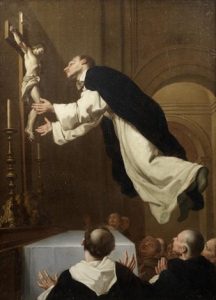 Far more impressive and splendid than all St Domini’s miracles, though, were the exceptional integrity of his character and the extraordinary energy of divine zeal which carried him along. Without difficulty he found his way into people’s hearts as soon as they saw him. Everywhere, in word and deed, he showed himself to be a man of the gospel…. Everybody was enfolded in the wide embrace of charity, and since he loved everyone, everyone loved him. He made it his own business to rejoice with those who were rejoicing and to weep with those who wept. He was full of affection and gave himself utterly to caring for his neighbors and to showing sympathy for the unfortunate.
Far more impressive and splendid than all St Domini’s miracles, though, were the exceptional integrity of his character and the extraordinary energy of divine zeal which carried him along. Without difficulty he found his way into people’s hearts as soon as they saw him. Everywhere, in word and deed, he showed himself to be a man of the gospel…. Everybody was enfolded in the wide embrace of charity, and since he loved everyone, everyone loved him. He made it his own business to rejoice with those who were rejoicing and to weep with those who wept. He was full of affection and gave himself utterly to caring for his neighbors and to showing sympathy for the unfortunate.
The Libellus
Blessed Jordan of Saxony
